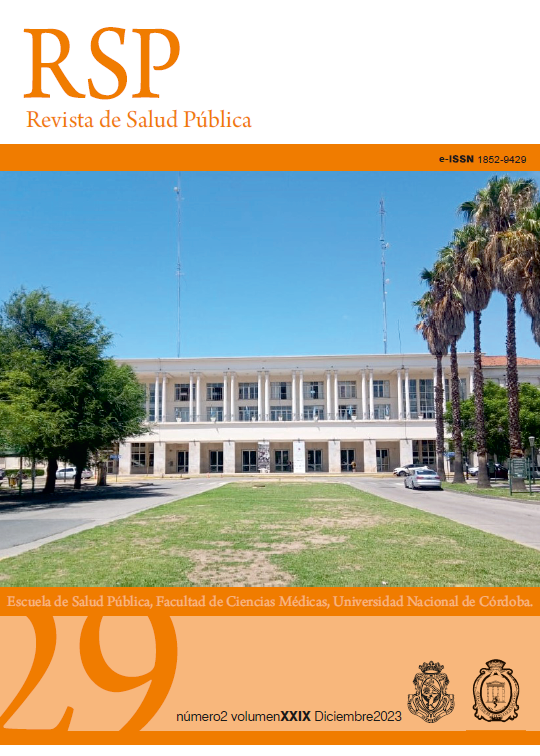"Meditation in the classroom"
A pilot program for mental health promotion in adolescents. San Bautista. Canelones, Uruguay.
DOI:
https://doi.org/10.31052/1853.1180.v29.n2.42036Keywords:
mental health, adolescents, mindfulness, emotional intelligenceAbstract
The vital crisis of adolescence is experienced by adolescents with different degrees of impact on their mental health, according to the greater or lesser presence of social networks and the strength of family support. This pilot experience aimed to bring to the classroom tools for cultivating emotional intelligence and mindfulness as strategies to promote mental health in adolescents. The perception of the teachers of the institution is that the intervention generated a positive result and was well received by the students, perceiving an improvement in the climate of coexistence in the classroom. The evaluation made to the students shows a positive impact on the control of emotions such as anger, and is perceived by the participants as useful, especially for interpersonal relationships with classmates and friends.
Downloads
References
Arbelo C. Castellano G. Rava, P. Olivera MS. Hábitos, conductas y prácticas de riesgo de la comunidad liceal del Santoral, Departamento de Canelones, Uruguay, año 2011. Rev Salud Pública. 2011;1:7–14.
Programa Nacional de Salud, de Adolescencia y Juventud M de SP de U. Aportes para el abordaje de la salud de adolescentes en el primer nivel. Uruguay; 2022.
Silva, Andressa Ferreira da; Júnior, Carlos Alencar Souza Alves; Hinnig, Patrícia de Fragas; Lima, Luiz Rodrigo Augustemak de; Silva DAS. Suicidal behaviors and sedentary lifestyles among adolescents: A cross-sectional epidemiological study in Latin American and Caribbean countries. Clinics. 2020;75(e2015).
Junta Nacional de Drogas, Ministerio de Salud Pública de Uruguay . Adolescencias, un mundo de preguntas, II encuesta mundial de Salud Adolescente, GSHS 2012. 2012.
Tania Molina-Jiméneza , Ana G. Gutiérrez-Garcíaa, b LH-D y CMC. Estrés psicosocial: Algunos aspectos clínicos y experimentales. An Psicol [Internet]. 2008;24(2). Available from: https://www.um.es/analesps/v24/v24_2/19-24_2.pdf
Sánchez Iglesias CF. “Mindfulness”: revisión sobre su estado de arte. Int J Dev Educ Psychol. 2016;2(1):41–9.
Schonert-Reichl, K. A., & Lawlor MS. The effects of a mindfulness-based education program on pre- and early adolescents’ well-being and social and emotional competence. Mindfulness (N Y). 2010;1(3):137–51.
Broderick, P. C., & Metz S. Learning to BREATHE: A pilot trial of a mindfulness curriculum for adolescents. Adv Sch Ment Heal Promot. 2009;2(1):35–46.
Mendelson, T., Greenberg, M. T., Dariotis, J. K., Gould, L. F., Rhoades, B. L., & Leaf PJ. Feasibility and preliminary outcomes of a school-based mindfulness intervention for urban youth. J Abnorm Child Psychol. 2010;38(7):985–94.
Stefanell LLS iD HEF iD HCCH iD S. Os efeitos do mindfulness na percepção dos estudantes de medicina de uma universidade brasileira. Rev Bras Educ Med. 2021;45(2):e053.
Micheline Flak. RYE Uruguay (Recherche sur le Yoga dans l’Education); yoga en la educación. [Internet]. Available from: https://www.ryeuruguay.com/inicio
Braida J, Ruétalo R. La salud andando en el territorio. Primera edición. Montevideo: Unidad de Extensión de Facultad de Medicina, Universidad de la República; 2014. 75-88
Liao, K. Y.-H., & Weng C-Y. Gratefulness and subjective well-being: Social connectedness and presence of meaning as mediators. J Couns Psychol. 2018;65(3):383–93.
Guillén-Riquelme, Alejandro; Buela-Casal G. Versión Breve del STAI en Adolescentes y Universitarios Españoles. Ter Psicológica. 2013;31(3):293–9.
Downloads
Published
Issue
Section
License
Copyright (c) 2023 Escuela de Salud Pública y Ambiente. Facultad de Ciencias Médicas. Universidad Nacional de Córdoba

This work is licensed under a Creative Commons Attribution-NonCommercial 4.0 International License.
Authors who publish with this journal agree to the following terms:
- Authors retain copyright and grant the journal right of first publication with the work simultaneously licensed under a Creative Commons Attribution License which allows the work to be copied, distributed, exhibited and interpreted as long as it is not done for commercial purposes.
- Authors are able to enter into separate, additional contractual arrangements for the non-exclusive distribution of the journal's published version of the work (e.g., post it to an institutional repository or publish it in a book), with an acknowledgement of its initial publication in this journal.
- Authors are permitted and encouraged to post their work online (e.g., in institutional repositories or on their website) after the publication process. (See The Effect of Open Access). (See The Effect of Open Access).







